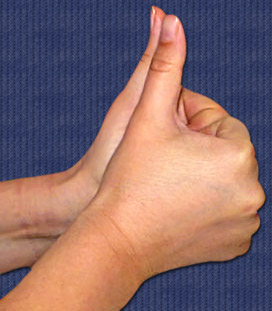 The science of yoga says that, the human body is made up of five basic elements named as the Pancha Tattvas. Mudra Yoga further supports this concept and holds the view that each finger stand as the emblem of each tattva. This also contours the very base of the Tattva Yoga Mudra. In Tattva Yoga Mudra the five fingers of the hand are regarded as representative symbols of these vital elements in the body.
The science of yoga says that, the human body is made up of five basic elements named as the Pancha Tattvas. Mudra Yoga further supports this concept and holds the view that each finger stand as the emblem of each tattva. This also contours the very base of the Tattva Yoga Mudra. In Tattva Yoga Mudra the five fingers of the hand are regarded as representative symbols of these vital elements in the body.
The mudras are a cluster of specific folds, mutual positioning or postures of the fingers in one or both hands which were discovered by the Vedic scientists of yoga for maintaining the perfect natural order and healthy equipoise of the pancha tattvas. The disturbance of the tattvas cause disturbance of health and sometimes it involves mind. These disturbances or disorder or deficiency in these elements can lead to improper health. This basic concept of Mudra Vigyan is further contoured in Tattva Yoga Mudra which not only identifies each finger as the representation of the pancha tattvas but at the same time aids in balancing the pancha tattvas in human body with the support of appropriate and suitable mudras.
In Tattva Yoga Mudra, the thumb equates to the source of balancing the flow of Agni tattva. The vayu tattva is determined by the fourth or the index finger. The middle finger in the mudras regulates the akasha tattva in the body. The ring finger and little finger control the regulation of the Prithvi and the jala tattvas respectively. Proportionate balance of these tattvas helps the body to perform the natural maintenance of a vigorous body and a happy mind. In Tattva Yoga Mudra mudras can be categorised in a few ways like Prana mudra that deals with harmonic compounding of the jala, Prithvi and Agni tattvas. Gyana mudra is another distinction which has the generating power of vayu and Agni tattvas. Another important mudra of the Tattva Yoga Mudra is the Varuna mudra. This mudra is the implementation of the jala tattva. The harmony of Agni and Prithivi tattvas is devised in the Surya Mudra. Vayu Mudra is the mechanisation of the mutual proportion of Agni and vayu tattvas. Besides this Prithvi mudra helps to cheer up the mind and focuses it by broadening attitude.
In tattva mudra Vigyan, all these mudras are practiced to bring an effective change in the body and mind.




















